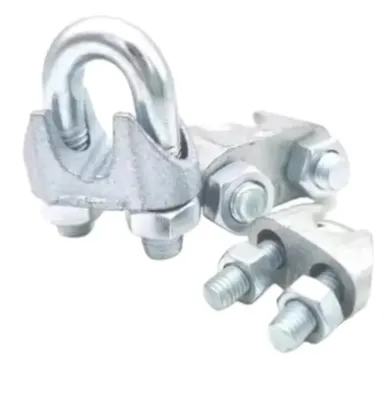জুলাই . 09, 2025 11:04 ফিরে তালিকায়
Bolt Essentials
From skyscrapers to furniture assembly, bolt fasteners serve as fundamental components in countless applications. This guide explores the fascinating world of bolt types, examines various types of bolt, deciphers the significance of bolts logo, explains hexagonal head designs, and clarifies bolt sizes selection. Understanding these elements ensures proper fastening solutions for any project.

Exploring Common Bolt Types
The world of bolt types encompasses an impressive variety designed for specific purposes. Carriage bolts feature smooth domed heads and square necks to prevent rotation during tightening, making them ideal for wood applications. Eye bolts contain circular loops at one end for attaching cables or chains in rigging scenarios. Among types of bolt, flange bolts stand out with integrated washer-like bases that distribute load pressure evenly. Specialty bolt types like elevator bolts with thin, flat heads serve niche industrial functions where clearance matters most.
The Significance of Bolts Logo Markings
Those small imprints forming a bolts logo convey critical information about a fastener's specifications. The bolts logo typically indicates the manufacturer's identification, material grade, and sometimes the production batch. On hexagonal head bolts, these markings appear on the top surface, allowing quick visual verification. Metric bolt sizes often use numerical grades in the bolts logo, while imperial measurements might employ radial lines. Understanding these bolts logo symbols helps professionals select the appropriate bolt types for structural applications where material strength directly impacts safety.
Hexagonal Head Design Advantages
The ubiquitous hexagonal head design represents an engineering triumph in fastener technology. Six flat sides provide multiple wrench engagement points while allowing tool access in confined spaces—a key advantage over square heads. The hexagonal head profile distributes torque evenly during tightening, reducing the risk of rounding compared to other shapes. Modern hexagonal head bolts often incorporate washer-faced bases that protect surfaces and improve clamping force distribution. This design works harmoniously across all standard bolt sizes, from miniature electronics to massive infrastructure projects.
Selecting Proper Bolt Sizes
Choosing correct bolt sizes involves more than measuring diameter and length. The thread pitch—the distance between thread peaks—significantly affects performance in different bolt types. Fine-thread bolt sizes excel in hard materials and precision applications, while coarse threads work better in softer substrates. Matching bolt sizes to their intended load requirements prevents joint failure, with industry charts specifying appropriate diameters for various tension and shear forces. Always consider both shank length and thread length when selecting bolt sizes to ensure proper engagement without bottoming out in threaded holes.
Bolt Technology FAQs
What distinguishes bolt types in structural applications?
Structural bolt types feature higher grade materials and tighter manufacturing tolerances than standard fasteners, often indicated by specific bolts logo markings.When examining types of bolt, material composition plays a crucial role in performance. Stainless steel variants resist corrosion in marine environments, while titanium types of bolt offer exceptional strength-to-weight ratios for aerospace applications. The bolts logo often indicates material grade and manufacturing standards. Plated types of bolt provide enhanced durability through zinc, cadmium, or chrome finishes that protect against environmental degradation while maintaining the integrity of the hexagonal head gripping surfaces.
How do I interpret bolts logo markings?
The bolts logo typically combines manufacturer symbols with grade indicators—more lines or higher numbers usually denote stronger materials in hexagonal head fasteners.
Why does hexagonal head design dominate bolt types?
The hexagonal head offers optimal balance between tool engagement, torque transmission, and space efficiency across various bolt sizes and applications.Hexagonal head often use for all kinds of machinery, home appliance, electronic products, computers, power switches, building etc.
What's the proper way to measure bolt sizes?
Measure bolt sizes by diameter across the threads, length from underside the hexagonal head to tip, and thread pitch using a thread gauge for complete specification.
Can different bolt types be used interchangeably?
While some bolt types may physically fit, always match the specific types of bolt to their intended application considering material, strength, and environmental factors.A bolt is used to connect two objects, usually through a light hole, and needs to be used in conjunction with a nut. A single bolt cannot connect.A wrench is generally used as a tool.The heads are mostly hexagonal heads, etc., generally larger.The carriage bolt is applied in the groove, and the square neck is stuck in the groove during installation, which can prevent the bolt from rotating, and the carriage bolt can move in parallel in the groove.Since the heads of the carriage bolts are round, there is no design of useful power tools such as cross grooves or inner hexagons, and they can also play a role in preventing theft in the actual connection process.
From basic bolt selection to interpreting sophisticated bolts logo markings, proper fastener knowledge ensures mechanical integrity across countless applications. The evolution of hexagonal head designs and precision bolt sizes continues to support advancing engineering requirements in all industries. Whether working with common bolt types or specialized types of bolt, understanding these fundamental components remains essential for professionals and DIY enthusiasts alike.
-
sleeve-anchor-innovations-that-hebei-yuetong-fasteners-engineering-excellence
খবরAug.22,2025
-
screw-s-precision-engineering-for-global-industries
খবরAug.22,2025
-
hexagon-nut-that-high-quality-fasteners-from-hebei-yuetong
খবরAug.22,2025
-
clamp-that-high-quality-fastening-solutions-from-hebei-yuetong
খবরAug.22,2025
-
bolt-that-reliable-fasteners-from-hebei-yuetong
খবরAug.22,2025
-
anchor-bolt-that-premium-fasteners-for-secure-and-durable-installations
খবরAug.22,2025


